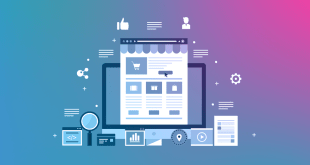In the realm of website design, understanding user behavior is paramount. Beyond the usual click-through rates and page views lies a more profound aspect of user experience that can truly unlock the potential for creating remarkable websites. Emotion tracking in user experience design delves into the emotional responses and reactions of users while interacting with a website. This innovative approach empowers designers and businesses to optimize their websites based on a comprehensive understanding of user emotions, paving the way for improved user satisfaction and higher conversions.
Unraveling Emotion Tracking: An Introduction
Emotion tracking involves the use of various tools and technologies to gauge users’ emotional responses as they interact with a website. Traditional analytics provide valuable insights into user behavior, but they often fail to capture the underlying emotions that influence decision-making. Emotion tracking tools, such as facial expression analysis, eye tracking, and biometric sensors, fill this gap by capturing user emotions in real-time.
User behavior on a website goes beyond merely clicking on links and exploring pages. Emotion tracking uncovers the emotional journey of users, shedding light on their frustration, delight, confusion, or engagement during their interactions. By analyzing these emotional patterns, businesses can make data-driven decisions to enhance user experience.
The Significance of Understanding User Emotions
Optimizing User Experience:
By understanding how users emotionally engage with a website, designers can optimize layouts, content, and calls-to-action to elicit positive emotional responses, leading to increased engagement and conversions.
Enhancing Brand Perception:
Websites that evoke positive emotions contribute to a stronger brand perception, fostering trust and loyalty among users.
Identifying Pain Points:
Emotion tracking allows businesses to identify specific pain points in the user journey, enabling them to rectify issues and improve overall website performance.
Personalization Opportunities:
By recognizing individual emotional responses, websites can tailor content and recommendations to each user, offering a more personalized experience.
Emotion Tracking Techniques in UX Design
Facial Expression Analysis
Facial expression analysis employs sophisticated algorithms to detect and interpret users’ facial expressions while navigating a website. By capturing emotions like happiness, surprise, frustration, or boredom, designers can gauge the effectiveness of their design elements and make necessary improvements.
Eye Tracking
Eye tracking technology tracks users’ eye movements to determine what draws their attention and what they overlook. This information helps in optimizing page layouts and ensuring that essential elements receive adequate visibility.
Biometric Sensors
Biometric sensors, such as heart rate monitors and galvanic skin response sensors, measure physiological responses related to stress, excitement, or relaxation. This data allows designers to identify elements that trigger strong emotional reactions in users.
Sentiment Analysis of User Feedback
Incorporating sentiment analysis of user feedback provides valuable insights into how users perceive a website. Analyzing user comments, reviews, and social media mentions can help identify patterns in sentiment and satisfaction levels.
Leveraging Emotion Tracking Data
Once emotion tracking data is collected, the next crucial step is to analyze and interpret it to inform design decisions. Here are key strategies for leveraging emotion tracking data in UX design:
A/B Testing with Emotion Insights:
Implement A/B tests with emotional insights to compare the impact of different design elements on user emotions. This iterative process enables designers to fine-tune their approach.
Identifying Emotional High Points:
Identify moments where users exhibit positive emotional responses, such as delight or satisfaction, and reinforce these elements throughout the website.
Addressing Pain Points:
Pinpoint areas where users experience negative emotions or frustration. Addressing these pain points can lead to significant improvements in user experience.
Emotional Storytelling:
Craft a narrative that evokes desired emotions, guiding users through their journey on the website and creating a memorable experience.
Final Words
Emotion tracking in user experience design opens up a new dimension of understanding that goes beyond clicks and statistics. By tapping into the emotional responses of users, businesses can craft websites that resonate on a deeper level, forging stronger connections and driving tangible results. Embrace emotion tracking in your UX design process to create experiences that leave a lasting impact on your audience.
Commonly Asked Questions
1. How does emotion tracking differ from traditional analytics in UX design?
Emotion tracking focuses on capturing users’ emotional responses, while traditional analytics primarily measure quantitative metrics like clicks and page views. Emotion tracking provides deeper insights into how users feel and react while navigating a website.
2. Are there ethical concerns regarding emotion tracking in UX design?
Ethical considerations do arise with emotion tracking, especially concerning user privacy and data collection. It is crucial for businesses to be transparent about the tools and techniques used and obtain explicit consent from users before implementing emotion tracking.
3. Can emotion tracking benefit e-commerce websites?
Absolutely! Emotion tracking is particularly valuable for e-commerce websites, as it helps identify emotional triggers that influence purchase decisions. By understanding user emotions, businesses can optimize product pages, checkout processes, and overall shopping experiences.
4. What are some popular emotion tracking tools available for UX designers?
There are several emotion tracking tools available, including Affectiva, EyeSee, Tobii Pro, and Emotient. Each tool offers unique capabilities for capturing and analyzing user emotions.
5. Is emotion tracking applicable to mobile app design as well?
Yes, emotion tracking can be applied to mobile app design to understand how users emotionally engage with the app interface. It provides valuable insights for enhancing the user experience and creating emotionally compelling app experiences.
 webfily
webfily


